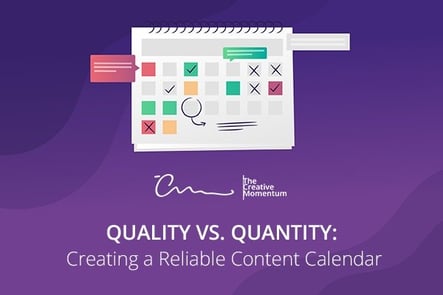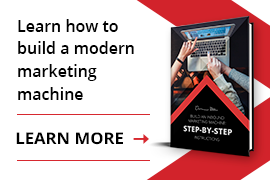
Back in 2013, marketing guru Neil Patel claimed a linear relationship between post quantity and traffic. It’s no secret that publishing often and on time is huge in content marketing, but what about quality? Moreover, how do you break it down to a system in order to put out reliable content calendars?
The Principles of Content Marketing
The general public is used to being badgered with ads, spam, and promos that they never signed up for. When you take the time to figure out what their real questions are, you can provide information that draws them in organically. This is the first step to cultivate a relationship with your target market. It’s also the foundation of the current paradigm of inbound marketing: sharing ideas that people care about.
Keyword: ideas. You’re sharing information, not an impression or a feeling. It isn’t a car commercial or a radio jingle. You provide real insight; your audience provides real attention. The rest falls into place.
The only issue is that when you proceed from the conviction that quantity is king, quality goes down the drain as you set all engines to throttle pumping out whatever sticks to the wall. With all due respect to Mr. Patel, it isn’t 2013 anymore.
Quality matters, and quality requires thought and planning.
Know your Audience
The first step of any kind of competent marketing campaign is to learn about your target market. Before you do anything else, find out who you’re publishing for. A quick look at the competition can tell you what works in your industry, but you want to carve out your own corner of the market, and deeper insights require more extensive effort. Analytics and surveys can give you data to work with, whereas focus groups can provide in-depth, subjective insight into your clientele. Information is your friend. How far you want to go down the rabbit hole?
Know Thyself
Once you’ve established who you’re writing for and the angle you’re looking to take, look at your own organizational capabilities and your brand.
First off, determine a reasonable schedule for publishing. Remember, the goal is to shoot for quality content to pull in in organic traffic. However, you run into an issue when considering the modern attention span. You lose on both return visits and new leads if there’s not enough going on. There’s a reasonable balance to be struck between the volume, type, and depth of content that you can produce at a high quality on a consistent schedule. However, striking that balance requires insight into your organizational resources.
The other facet of your campaign that relies on knowing your own organization relates back to a foundational element of a good content strategy: consistency. Publishing schedules, article length, structure, and voice should all adhere to a cohesive branding effort. These considerations start from the topics, prompts, outlines, and suggestions of your content calendar. That’s why your calendar might be the most important step to exhibit direction in your content campaign.
The Finishing Touches
With the major pain points out of the way, it’s time to focus on the nitty-gritty. It’s 5 steps to lift-off and each consideration is just as important as the last. Take a deep breath and get ready for your last steps to the perfect editorial calendar. Your final steps are to:
Choose the right platform
Step one was to know your audience and this one of the many places where it pays off. Social media usage varies by age not just in frequency, but also platform of preference. According to Pew Research, some of the most pronounced differences occur across Snapchat, Pinterest, and LinkedIn. Respectively, the primary demographics on these platforms are 19-24 year olds, women, and people with college education. These are the sort of differences that need to dictate your targeting with your content calendar.Determine your content type
A good content calendar is diverse. No one sticks around for long to watch a one trick pony. Contemporary content gurus mix things up with blog posts, e-Books, Podcasts, videos, newsletters, and social media posts. Figure out what kind of content works for your product and industry and set out with a plan.Make it about them
Drawing from the principles of content marketing, remember that this is about your audience, not about you. Consider utility, interest, and insight. Prioritize the provision of the answers, information, and engagement that your audience is looking for. There will be plenty of time for promotion down the line.Establish a sense of community
This is one of the trickier aspects of the art of content marketing. Building on the previous point, a successful social media campaign is more than a flag stand for your brand. It’s the hub of a community. In order to establish that kind of presence you need to elicit customer interaction. Ask insightful questions that invite user participation. Use surveys. Respond to your feedback. Interactivity is the name of the game, and the social media giants are onto this.Devise, launch, record, refine, repeat
With all of this in mind, it comes down to the point of putting it into action. Write up a content calendar and get ready for lift-off. But keep in mind that your work doesn’t finish once your content hits the web. Even a successful campaign should be continually refined and adjusted. In order to accomplish successfully, you need to keep track of what works and what doesn’t by tracking your marketing success. Stick to what works, drop what doesn’t, hit the drawing board, and do it again.While it may seem like a lot to take in, there’s pay-off to it all.
None of this is a one man show. Content creation is a team effort, oftentimes one with a revolving door. The members of your team can change with outsourcing, new recruits, or freelancers. Your ability to launch a dynamic and adaptable content campaign relies on documentation in the form of your editorial calendar. This ensures that your campaign remains intact regardless of organizational shifts.

